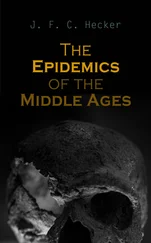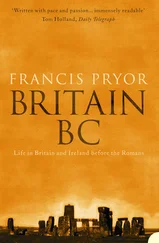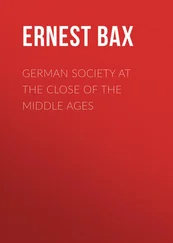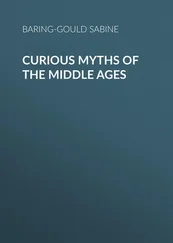I have touched on metal detecting, but a far more significant factor in shaping the way we view the past has been the explosion of new information from commercial archaeology, which I discussed in the Introduction. Thanks to computers and Geographical Information Systems (GIS) this store of new information is now available to archaeologists and others. To be more specific, this means that we now have the information to re-examine the way that wics and emporia have traditionally been interpreted.
Two questions spring immediately to mind. The first is perhaps the most obvious: were they isolated, one-off royal foundations that existed to promote and exploit a royal monopoly of imported prestige goods? The answer to that is relatively simple: yes they were, and no they were not. They were, inasmuch as they show all the signs of royal involvement, but they were not isolated, nor did they monopolise all trade – or even most of the trade that was taking place in and around them. There was simply too much going on to attribute everything to some form of royal prerogative. One glance at the map of southern England see ( page 47) showing the three wics at Ipswich, London and Southampton reveals that the hinterland of these three places was liberally peppered with subsidiary, but still very significant, settlements and ‘productive’ sites which are positioned close to either Roman roads, ancient routes or navigable rivers. It is most noticeable that none is positioned on the more remote hills of the southern Midlands, in East Anglia or the South Downs. Good access and easy communication were clearly essential. These must be seen as trading places, but that of course does not mean they could not have been settlements or small towns in their own right. It does suggest, however, that royal power was not employed to confine all trade and exchange to the major wics and emporia . The evidence suggests that Middle Saxon trade was indeed organised around the wics and emporia , but that these formed just one part of an integrated system in which many people played an active part.
The second question that we can re-examine with the benefit of so much new information concerns the demise of the wics and emporia . Can we still confidently assert that the best part of a century of abandonment separated the appearance of the first burhs from the last feeble gasps of the declining wics? This suggestion becomes increasingly hard to support if the wics were indeed part of an integrated system, because if they declined and vanished, then surely the system as a whole must also have collapsed. But there is no evidence to suggest that anything of the sort happened. Yes, the wics and emporia declined in the late eighth and early ninth centuries, but certainly Lundenwic never disappears off the map. Nor do ‘productive’ sites simply vanish. Trade within Britain has slowed down by, say, 850, and the Late Saxon successors to the widely traded pottery known as Ipswich Ware (Thetford Ware, Stamford Ware, etc.) were never as widely distributed as their Middle Saxon precursor. This winding down can be attributed in part to political turmoil within the Carolingian Empire across the Channel, and to increasing Viking raids and conflict within Britain. But trade within Britain certainly didn’t cease. There was no hiatus; the Late Saxon economy never hit the buffers.
The emphasis on coins and metalwork from both the wics and the smaller ‘productive’ sites has tended to obscure the true nature of much of the trading that was taking place. I’ve already mentioned that Richard Hodges considers that something of an ‘industrial revolution’ was happening in the eighth century, and the best evidence for this comes in the form of Ipswich Ware.
I remember when I first came across this starkly functional, unglazed, dark grey pottery. I was with my friend and colleague Keith Wade, who had been the deputy director of the Saxon and medieval dig, which I had co-supervised in 1970, at North Elmham Park in central north Norfolk. In the late summer, when digging ended, I went with Keith in search of Ipswich Ware, which he rightly felt was very important because it represented the beginnings of a major Saxon industry. I don’t think either of us realised back then just how important Ipswich Ware was to become. I recall looking at my first sherds and noticing that they were lightly dimpled on the outside, and Keith explaining that this was an example of the slow-wheel technique of manufacture, where the vessel being formed was on an unpowered turntable that was revolved by a sideways flick of the thumb on the vessel itself, which left the distinctive ‘girth grooves’. Thanks to the Ipswich Ware Project we now realise that this pottery was produced in very large quantities and was distributed widely across southern England, presumably along the same roads and rivers that linked the various wics and ‘productive’ sites. If we are not looking at actual batch-based mass production, then we must be getting very close to it. Whatever the true situation, we have now moved well beyond a simple craft-based rural manufacturing tradition to something more standardised and, indeed, industrial.
I have to admit that I was only slightly aware of its importance at the time, but when I was working at North Elmham one of us found a sherd – actually it was a handle – of fine dark pottery which somehow seemed to have acquired a diamond-shaped piece of tinfoil which had stuck to its outside – as if it had accidentally stuck there when the Christmas turkey was being cooked. 29 The digger who found it had the good sense not to scrape the foil off with his finger – as I fear I might have done in my naïveté – and he showed it to Keith, who stared at it with eyes like saucers. ‘Good grief,’ he said (actually he used a stronger term), ‘it’s Tating Ware!’ And off he hurried to the director, Peter Wade-Martins, in the site hut. Peter was absolutely delighted, because Tating (pronounced ‘Tarting’) Ware mostly came from the Rhineland, and was the finest and most skilfully produced pottery in late-eighth- or ninth-century Europe. 30 It was very high-status stuff indeed, and the best evidence possible for trade.
As I have already mentioned, Keith and I went in search of pottery and pottery kilns when we had finished at North Elmham. In the autumn I visited him on a dig behind a farmyard at the beautiful Essex village of Wicken Bonhunt. The first find he showed me when I got there was another sherd of Tating Ware.
In the early 1970s the gradually increasing quantities of exotic early imported pottery were causing something of a stir. What did it all mean? Today, because we have the coins and metalwork provided by the detectorists, we can see that it was part of a larger pattern of trade. At the time we put the presence of this exotic material down to the Church. There was good evidence that the ruined church at North Elmham, known locally as the Old Minster, which stood just outside the excavations, might in its early stages have been the minster church *of the Saxon see (or seat of the bishop) of the diocese of Elmham, which incorporated most of the northern part of the kingdom of East Anglia (i.e. most of Norfolk). When the dig had finished and all the finds were assessed, it became clear that North Elmham had produced about 30 per cent of all the imported sherds of pottery known from Norfolk. I had chosen the right dig to take part in.
It would now appear that we may not have been wrong in assuming a link with the Church. Other important places and ‘productive’ sites, such as Barking Abbey (Essex), Burgh Castle and Caister-on-Sea (Norfolk), have produced exotic imports and are known to have had links to the Church. So, rather like the links to the ruling elites, it would appear that the Church also wanted its slice of the action, and probably took an active part in encouraging trade: God and Mammon shared the same interests.
Читать дальше









